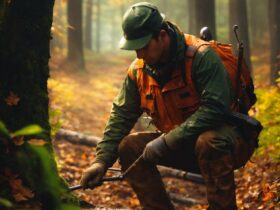In a world dominated by convenience and packaged foods, the art of foraging offers a journey back to our ancestral roots, unlocking the potential of forgotten feasts hidden in the wild. Beyond the familiarity of instant noodles and processed snacks, the bounty of nature awaits those willing to explore the edible treasures thriving in their natural habitats. This article embarks on a culinary adventure, delving into the forgotten feasts that can be foraged from the wild.
The Art of Foraging: Rediscovering Nature’s Pantry

Foraging is more than a survival skill; it is a celebration of nature’s abundance. The art of foraging involves identifying, harvesting, and consuming wild plants, fruits, fungi, and other edibles found in the natural landscape. From the vibrant greenery of forests to the coastal richness of shorelines, diverse ecosystems offer a plethora of culinary possibilities for those with a keen eye and a discerning palate.
Foraging requires knowledge and respect for the environment. Field guides, plant identification apps, and local expertise can aid in recognizing edible plants and avoiding potential hazards. As foragers immerse themselves in nature’s pantry, they gain a newfound appreciation for the diverse and often overlooked flavors that await discovery.
Wild Greens and Medicinal Herbs: A Culinary Tapestry

The wild is a haven for greens and herbs with unique flavors, textures, and medicinal properties. Dandelion greens, often dismissed as weeds, are rich in vitamins and can be sautéed or added to salads. Nettles, with their vibrant green leaves, offer a nutritious alternative and can be turned into teas or soups.
Beyond their culinary value, many wild greens possess medicinal properties. Plantain, a common yard weed, is known for its anti-inflammatory and healing properties. Foragers can discover a wealth of health benefits while simultaneously elevating their culinary experiences by incorporating these forgotten feasts into their meals.
Berries, Nuts, and Fruits: Nature’s Sweet Treats
The wild landscape is adorned with nature’s sweet treasures in the form of berries, nuts, and fruits. Blueberries, blackberries, and raspberries thrive in various environments, offering bursts of flavor and antioxidants. Hazelnuts, walnuts, and chestnuts can be foraged for their rich, nutty profiles, adding depth to both sweet and savory dishes.
Foraging for wild fruits, such as apples, plums, and persimmons, allows individuals to connect with the seasons and indulge in nature’s sweet symphony. However, it is essential to exercise caution and ensure accurate identification, as some wild berries and fruits may be toxic.
Fungi Forays: Unlocking the World of Wild Mushrooms
Foraging extends beyond plants to include the often-mysterious world of wild mushrooms. While some mushrooms are prized for their culinary excellence, others can be deadly. Mycology, the study of fungi, becomes an essential skill for those venturing into the realm of wild mushrooms.
Chanterelles, morels, and oyster mushrooms are among the edible varieties sought after by foragers. These wild delicacies impart distinct flavors and textures to dishes, elevating them to gourmet levels. However, a cautious approach is paramount when foraging for mushrooms, as misidentification can have severe consequences. Seeking guidance from experienced foragers or mycologists is advised for those new to the world of fungi foraging.
Conclusion
Beyond the convenience of modern supermarkets and the monotony of packaged foods, foraging for forgotten feasts in the wild unveils a world of culinary richness. The art of foraging reconnects individuals with the land, fostering a deep appreciation for the diverse flavors and nutritional benefits that nature provides. From wild greens and medicinal herbs to berries, nuts, fruits, and the intriguing world of wild mushrooms, foraging offers a sensory exploration of the natural world.
As foragers tread lightly and responsibly on the path of culinary discovery, they not only diversify their diets but also engage in a sustainable and regenerative relationship with the environment. The forgotten feasts of the wild are a testament to the resilience and abundance of nature, waiting to be rediscovered by those willing to venture off the beaten path and savor the flavors of the untamed landscape.





Leave a Reply